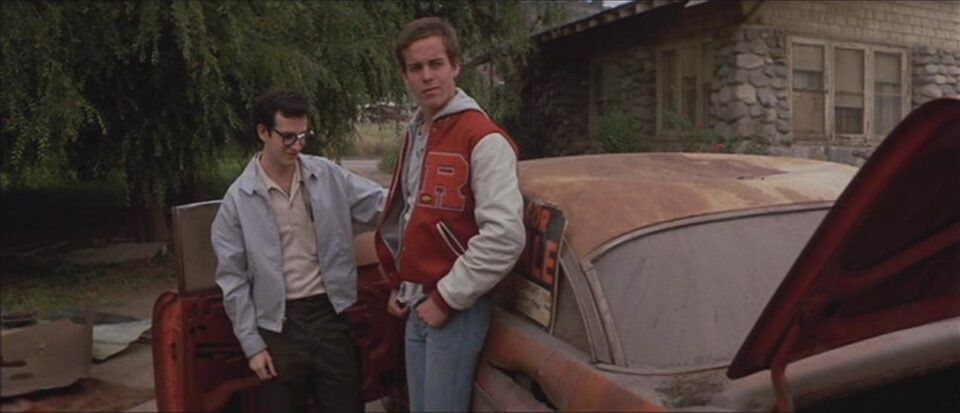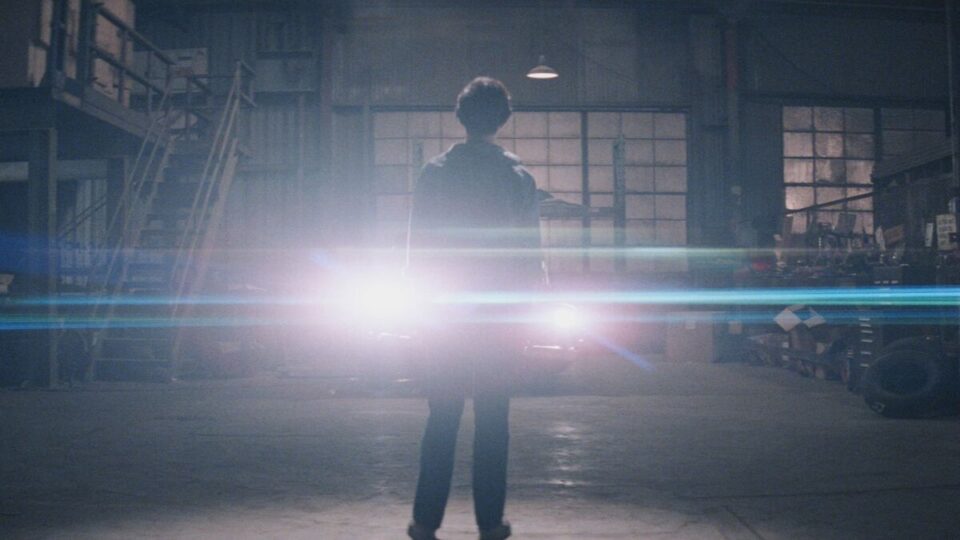Bad to the Bone: A Ride with John Carpenter’s ‘Christine’ Forty Years Later

There’s an anecdote about me that my parents love to tell to anyone who will listen. I’m three years old and watching my favorite movie at the time, John Carpenter’s Christine, based on the novel by Stephen King (this was okay with them, but Beavis and Butthead wasn’t. Go figure). My grandma’s visiting, the adults talking while I sit in awe of what’s on screen. On comes the scene where Christine is tailing bully Buddy (William Ostrander) and his pals. Just as Rich (Steven Tash) turns around, flashes his middle finger, and utters “asshole”, I do the exact same to my grandmother.
That was the last time I got to watch Christine for a while.
But the film had already set me on the road to becoming a lifelong horror fan. It was the first genre movie I ever watched. My introduction to both Carpenter and King. My first filmic crush. Celebrating its 40th anniversary this December, it is officially an antique. Yet in that time, it still remains not just one of Carpenter’s best films, but one of the better adaptations of King’s work in my oh-so-humble opinion. Buckle in and take a ride with me before you start revving your engines in disagreement.
Also Read: Forgotten John Carpenter Thriller Is His Ultimate Unsung Masterpiece
Following the success of the 1979 Salem’s Lot TV mini-series, producer Richard Kobritz was offered a pretty good deal by King. The writer would send him manuscripts of his upcoming novels, and Kobritz could pick one he was interested in developing. After passing on a couple, he read Christine and immediately fell in love with the tale about a dorky teenager named Arnie (Keith Gordon) who falls in love with a very old, very haunted 1958 Plymouth Fury. Kobritz offered Carpenter the job, who was fresh off the woes of The Thing’s box-office drubbing and needed work. John brought on writer Bill Phillips—who had developed Firestarter with him before that project lost its wheels—and they were off.
Any time you adapt a nearly 500-page novel into a film, some elements are going to be tossed out the window like trash on a highway. In the case of Christine, Phillips chose to get rid of a big one in order to streamline the story. Rather than have the car be inhabited by the ghost of its previous owner, Roland D. Lebay, Christine would be born evil. B-b-b-bad to the bone. Ask some fans and they’ll say this is why the book is better than the movie. I say Christine is the rare case where cutting out a key aspect of King’s story actually improves it.

Also Read: John Carpenter’s 10 Favorite Movies of All Time [Video]
Carpenter’s film fuels Christine with a life that isn’t present in the book. In the novel, she’s merely a possessed object, but in the film, she’s her own beast. She has her own wants and needs. When you sit down with Christine and that title pops up to the roar of the car’s engine, you can feel her voice shake the screen. It reverberates through your bones. Makes you sit up and listen, because she’s about to tell you how it’s going to be.
The opening factory scene doesn’t appear in the book, added here to allow Christine to make a statement. Shot on Fuji film, everything in the shop appears muted. The other cars all white. And then there’s Christine, a cherry-red beauty that draws your eyes right to her. As everyone involved with the production would say, she’s the star of the movie. And John makes damn sure you know it from the beginning.
On the other side of the mechanical performer is Keith Gordon as Arnie. Kevin Bacon had originally been up for the role before landing Footloose, and while my love for the Bacon knows no bounds, that was for the better, because Gordon is tremendous in the role. The actor had appeared in other genre films such as Jaws 2 and Dressed to Kill, but in Christine, we get to experience his full range as a performer. An outcast himself growing up, King has often explored the trials and tribulations of characters that find themselves on that end of the social spectrum.
Also Read: What Will Be John Carpenter’s Legacy: Films or Music?
While Carrie may be the most memorable of those stories, Christine tails right behind it in second place, in large part thanks to Gordon’s magnetic performance. Playing a bullied young man with suffocating parents, there’s a quiet pain resonating from the actor like the purr of an idling engine. One shift away from either screaming or stalling entirely. Anyone who’s ever been an outcast can see themselves reflected in Arnie’s taped-together glasses.
Then he spots Christine. Rusted. Falling apart. Doesn’t matter. It’s love at first sight. And you know what? She loves him right back. As Phillips has put it, “Christine symbolizes ugliness and symbolizes potential. And I think what Arnie builds into Christine, what Christine comes to mean for Arnie, is not just making Christine beautiful, but making Arnie beautiful”. The longer the film goes on, the more Arnie transforms, visually and internally, into someone unrecognizable by those closest to him. Reminiscent of the way some of us change ourselves when we’re young and in love.
Also Read: John Carpenter’s ‘The Ward’ is a Better Ghost Story Than You Remember
On paper, the idea of a romance between a guy and his car is absurd. But Carpenter treats the material with a gravitas that makes it feel sincere. The iconic “show me” scene where Christine repairs herself before Arnie’s eyes isn’t just an impressive feat accomplished with hydraulics and shooting in reverse. It’s a striptease. A flirtation. Strange and uncomfortable and oddly erotic. It adds skin and bones—and car parts?—to the relationship between the two that gives it far more weight than what’s in the novel.

Carpenter and Phillips both understood that the tragedy of Arnie and Christine’s love is universal. Perhaps that’s why there’s a soft sadness to Christine, emphasized by Carpenter and Alan Howarth’s simple yet affecting score. John claims to not be a big gore guy despite outliers like The Thing, and the fact that Christine may be his most bloodless horror film works to its advantage. Reverence is paid to the story, not to be undercut by the distraction of the effects (of which there are still plenty. Just try forgetting the image of Christine soaring down the highway in flames).
Also Read: Quentin Tarantino Reveals Which Of His Films Was Influenced By A John Carpenter Classic
Instead, the focus is on Arnie’s changing personality and his relationship to others, explored through his best friend Dennis (John Stockwell) and girlfriend Leigh (Alexandra Paul). They want nothing more than to hold onto their friend. But Arnie is so consumed by who he wants to be that he forgets who he is. Both versions of the story are tragic, but the fact that Arnie succumbs to his emotions rather than having the ghost of Lebay to blame makes it all the more devastating. He more or less chooses his fate, driving home the thematic inevitability of growing apart and losing loved ones as you get older. That’s just life, kid.
Christine may be a product of her time, communicating through nothing but old rock ‘n roll songs, yet the relevance of the film will never die. Captivating. Shocking. Heart-rending. It’s an example of what a good adaptation should accomplish that shines as bright as those furious headlights in the night. Different than the book—and better depending on who you talk to—without losing the core themes of what makes the story go. Haters can keep knocking on it all they want, but they can’t come in. Forty years later, Christine remains as pristine as that first day she drove into theaters and took audiences for a ride they’d never forget.
Categorized:Editorials

